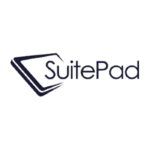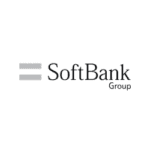 As international travel returns following the easing of pandemic-related restrictions and the hotel sector prepares for higher volumes of demand, property owners and investors will be looking to recoup some of the losses their businesses have sustained over the past two years. To generate profits in a recovering environment, hotels must increase patronage, grow revenues and better manage their own costs.
As international travel returns following the easing of pandemic-related restrictions and the hotel sector prepares for higher volumes of demand, property owners and investors will be looking to recoup some of the losses their businesses have sustained over the past two years. To generate profits in a recovering environment, hotels must increase patronage, grow revenues and better manage their own costs.
While managing costs to the business often focuses on staff wages, property maintenance and food & beverage expenditure; what should not be overlooked is the actual cost to a hotel for acquiring a guest in the first place.
Today’s costs for acquiring guests are significant. Online Travel Agencies (OTAs) charge between 15 and 25 percent commission for every booking they secure, with hotels also paying significant transaction fees to their selling systems if the reservation is received through them. These third-party costs influence the amount of revenue hotels can secure from each guest – ultimately impacting a property’s bottom line.
For many hoteliers, OTAs are an accepted part of the distribution toolkit due to their marketing power and high customer traffic. However, they should not make up the majority of sales or distribution. Any relationship which is weighted in favour of an OTA or a group booking partner for that matter, to the detriment of a hotel’s ability to obtain satisfactory revenue outcomes, should be reviewed.
Reduce acquisition costs for better business performance
There are a multitude of ways hoteliers can determine the cost structure of a booking channel, including incorporating infrastructure and labour costs like data servers and salespeople. For revenue management purposes though, it’s more appropriate to keep it simple and consider the cost of acquiring one additional booking through a channel. This will make it easier to compare costs on a channel-by-channel basis and build a foundation for optimisation—i.e., how hoteliers decide if they need one more reservation from that channel, or if they have demand from lower-cost channels.
Through capturing their channel costs by looking at each booking endpoint in their distribution ecosystem—from direct online bookings through each GDS, OTA and group booking partner – hoteliers can effectively review and analyse their acquisition outlay. As a hotel considers each booking endpoint, it is important to define what the cost of taking each additional booking entails.
Once a hotel has a clean data set from which it can isolate its channel costs, revenue managers can measure channel performance using metrics such as next revenue and next ADR, which help make the decision to take more or less of the available demand through various channels on the basis of the cost to take one additional reservation through that channel. That’s how hotels will improve profit performance: by controlling costs on a channel-by-channel basis.
Hoteliers should review their third-party contractual commitments to group booking partners and investigate introducing more flexibility into those commitments. These changes typically take time to go into effect and have a significant bearing on how hotels can enact longer term channel optimisation.
A hotel that also knows the cost of its booking channels has greater power when it comes to contract negotiations with booking partners. This includes deciding how to agree to a fair commission percentage, or which rate and availability parity clauses to agree upon (and how a hotel is penalised for authorised breaking of said clauses within a contract).
 Convert your ‘lookers’ into ‘bookers’
Convert your ‘lookers’ into ‘bookers’
The most cost-effective online booking channel for a hotel remains its own website. How can hoteliers maximise direct bookings through their website? The first step is increasing web traffic from potential guests and attracting more ‘lookers.’ To do this, hotels need to understand more about those lookers. What dates are they searching for, where do they search and what is driving them to a particular market? Collecting this market intelligence provides data that can be used to develop targeted marketing campaigns that attract the right type of lookers, the ones most likely to become bookers.
Hoteliers can also increase direct bookings by retargeting past visitors and directing them to their website. When researching a location, potential guests may visit a variety of travel websites and OTAs before deciding where to stay. Hotels need to keep their property on the top of the consumer’s mind and influence guests to book on the hotel’s website. Technology that offers tailored adverts customised around visitor behaviour or website activity can help hotels achieve an estimated 10 percent return rate on website visits – increasing direct booking opportunities.
A direct booking is often the best kind of booking
Given the rising costs of distribution, it is critical to weigh the value of each booking channel. Hoteliers now need to ask themselves what the actual cost is of acquiring reservations through a booking channel and how much of that demand is needed.
While encouraging guests to book direct can help hotels bypass third-party commissions and fees, there are still many hotels that rely on the distribution and marketing reach of OTAs. In a recovering market where every dollar counts for hoteliers, revenue managers need to understand that often a direct booking is the best kind of booking.
For more information on how your hotel can better manage its booking channels to increase revenue performance, please visit: www.ideas.com


 Convert your ‘lookers’ into ‘bookers’
Convert your ‘lookers’ into ‘bookers’


















